
Consider a Banquette At only 120 square feet, with six openings interrupting the stream, this kitchen did not offer many choices in the means of seating. So kitchen designer Angela Bonfante tucked an L-shaped banquette to a corner, around a tiny table she found at a mail-order catalog. Using ready-made throw pillows from a discount retailer, instead of having custom cushions stitched, helped maintain the budget in check also. "Small spaces can be both practical and fun," says Bonfante. "It only takes some ingenuity!"

Or, a Space-Saving Booth Banquettes should not be L-shaped to save space. The configuration of this kitchen with designer Marika Meyer better lent itself into a restaurant-style stall with benches facing each other, providing chairs for four without blocking the window. Storage above and beneath the seats gets the most of this small space.
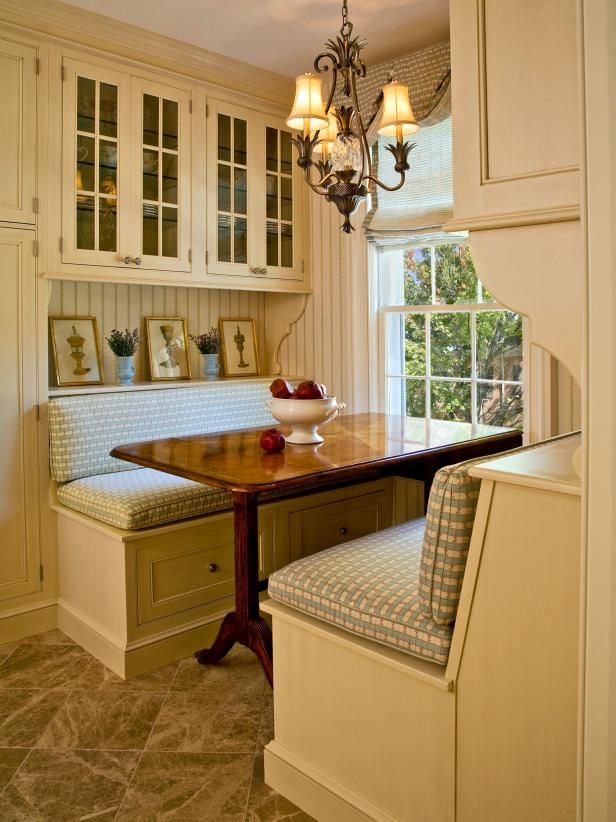
Get the Custom Look for Less If you enjoy the idea of banquettes but do not need to have them custom-built, think about these dining chairs from the Itsy Bitsy Ritzy furniture store. Offered in many stock length-and-depth combinations, the benches can be used in even the smallest kitchen corners. Bonus: Storage under the flip-up chairs supplements scant kitchen cupboard space.

Pull Up a Seat for Bonus Seating Here, interior designer Karen Soojian, ASID, supplemented banquette seating with 2 easily movable seats, leaving room for traffic in and out of the door. In a area, portability is a plus -- and are layout elements that are eye-catching. The table was made of reclaimed wood by a felled tree found near this Minnesota house while the sculptural base was created by furniture designer Tristan Thiel.
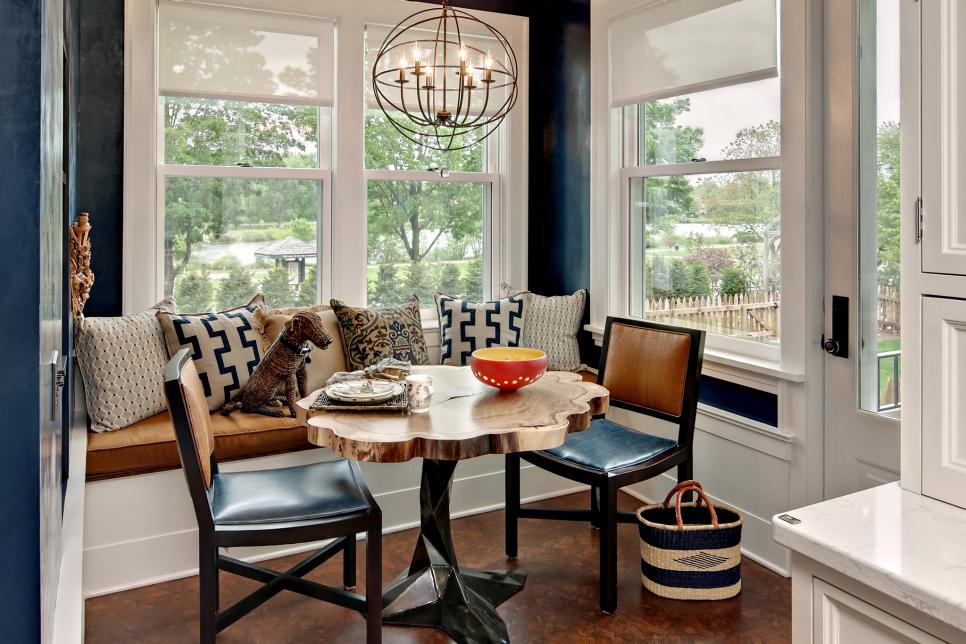
Lucite Chairs: the Obvious Choice When you're selecting chairs for a super-tiny kitchen, consider transparent ones such as these chrome and Lucite barstools at a D.C. display house kitchen created by Aidan Design. The refective chrome and clear plastic almost vanish from view, helping the kitchen look and feel larger.
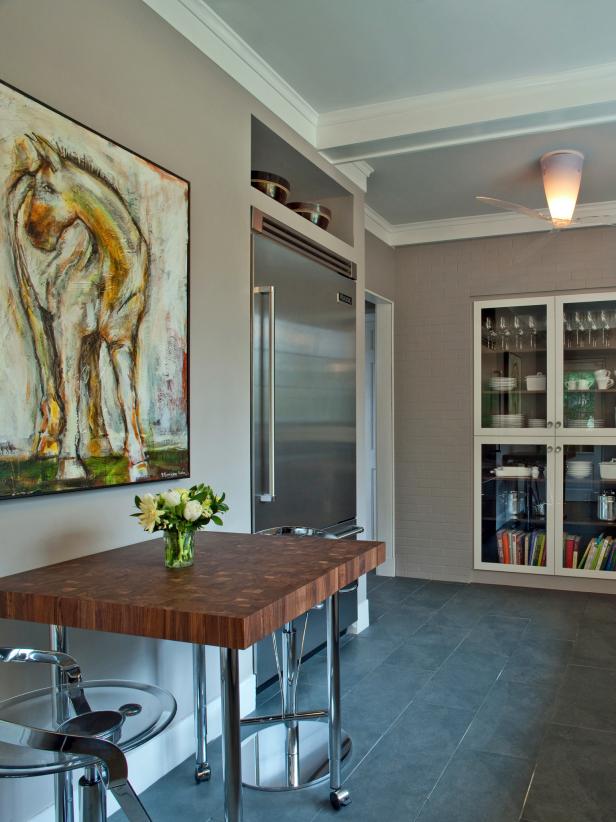
Add Seating With Stools Low, round stools are just another great way to incorporate chairs around a little table without gobbling up visual space. The rustic wood bits chosen by designer Ines Hanl of The Sky is the Limit Design operate nicely with the outdoorsy vibe of the room. In a more formal space, ceramic garden stools could get the job done very nicely.
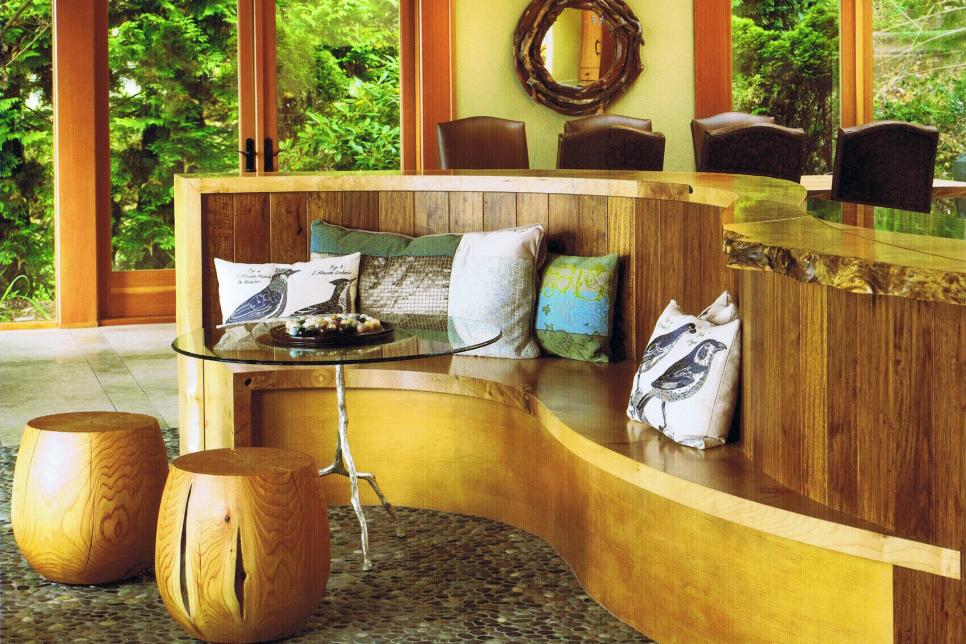
Insert Casters for a Easily Movable Alternative If you'd like flexible seats, you should not adhere to featherweight chairs and mobile stools. The stylishly substantial benches within this apartment by Studio Garneau are on casters, so they may be moved easily. Fast as you can say "after-dinner drinks," they're in the living space, providing a comfortable perch for lingering guests.
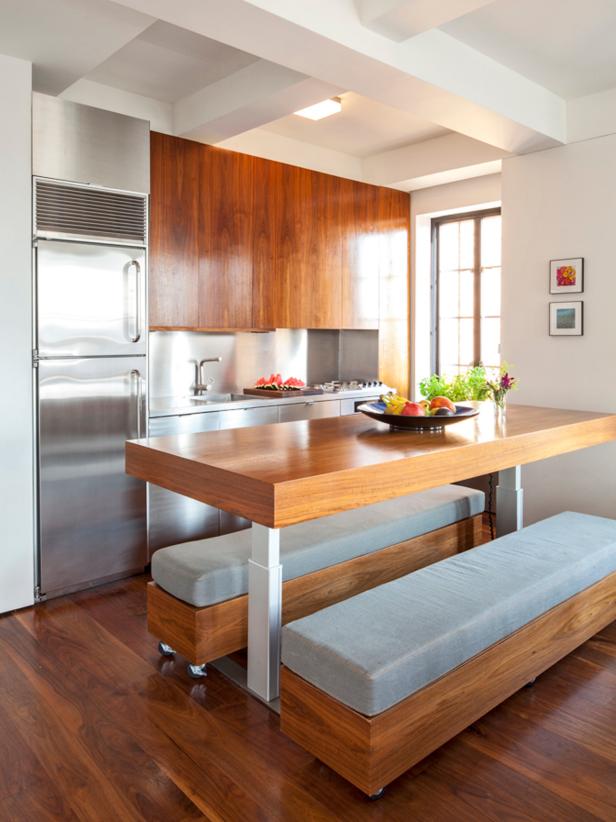
Insert Flexibility Having a Folding Tabletop The 13-foot-wide kitchen in this little home does double duty: It is both the laundry area and cook space. A clever custom made table connected to the island creates family dining space and a surface for folding clothes. Design by Wentworth Studio

Folding Tabletop, Extended Clothes aren't the only thing folded here: The tabletop folds up to give extra seating for guests.
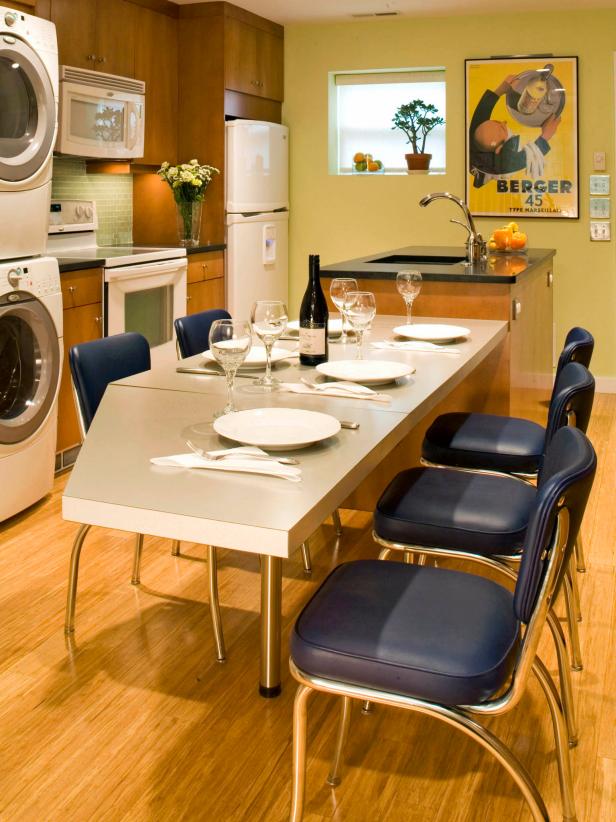
Or, Build In a Slide-Out Table When designer Cheryl Daugvila of Cheryl D Design revived the kitchen in this 100-year-old home, she wanted to update the space but retain the appearance loyal to the property's heritage. This vintage-look tabletop she designed pulls out like a drawer to accommodate up to five guests when entertaining or slides back into position to free up floor space when it's not needed.
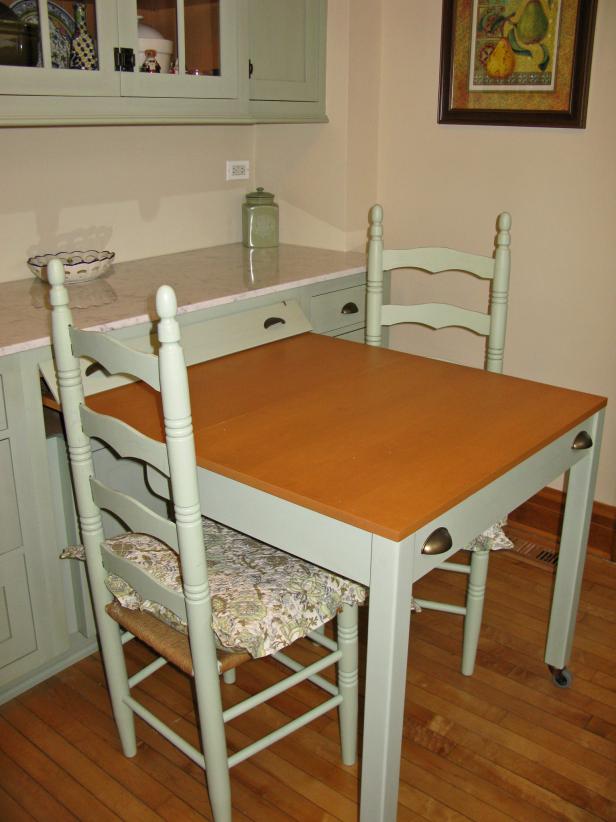
Intelligent Hidden Capabilities Can you imagine the architect Amy Alper added extra space to the 200-square-foot kitchen prep/dining surface? (Continue clicking to find out.)
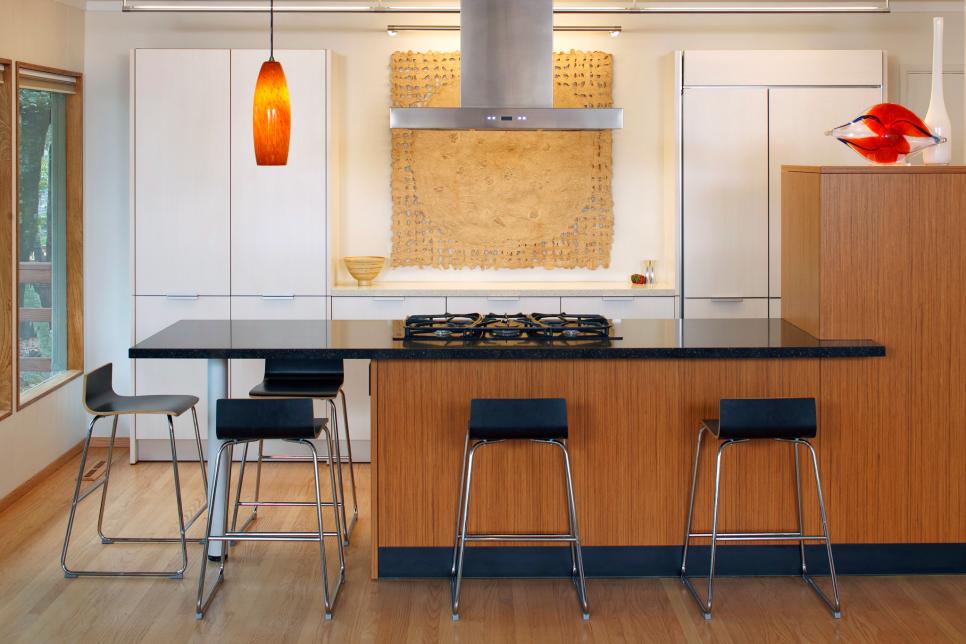
Custom Countertop When guests come to dine, the homeowners shirt the island range using a custom-made walnut cover that transforms the cooktop into a tiered surface for platters and serving bowls.
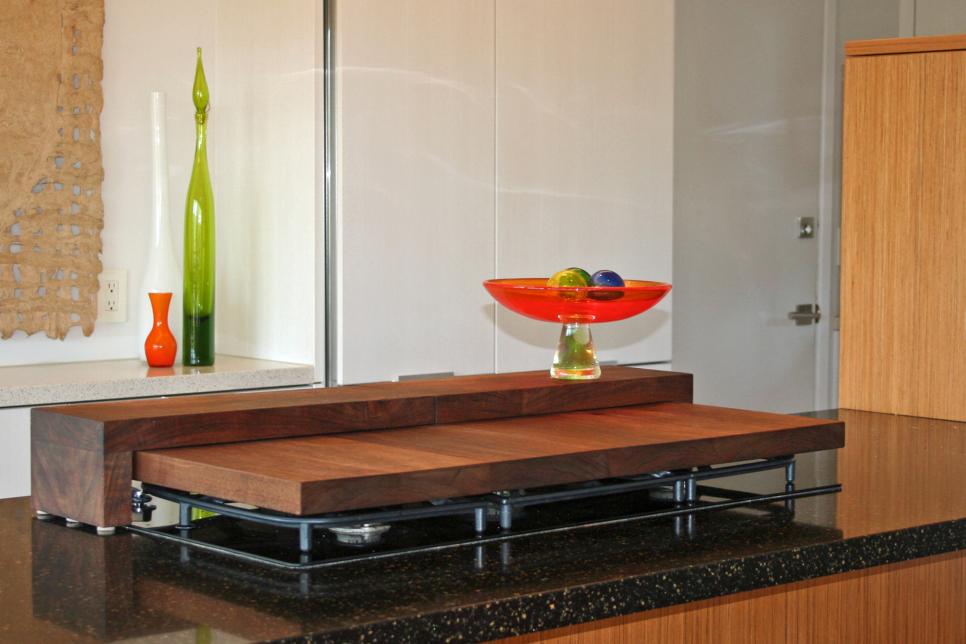
No Wasted Floor Space Within this 180-square-foot kitchen, Hamilton-Gray Design substituted a built-in breakfast nook with a dining table for 2, constructed around the back and side of the island. Fitting the table-height piece round the counter-height island gets the most of the available space and allows each surface to be at the right height for its designated purpose.
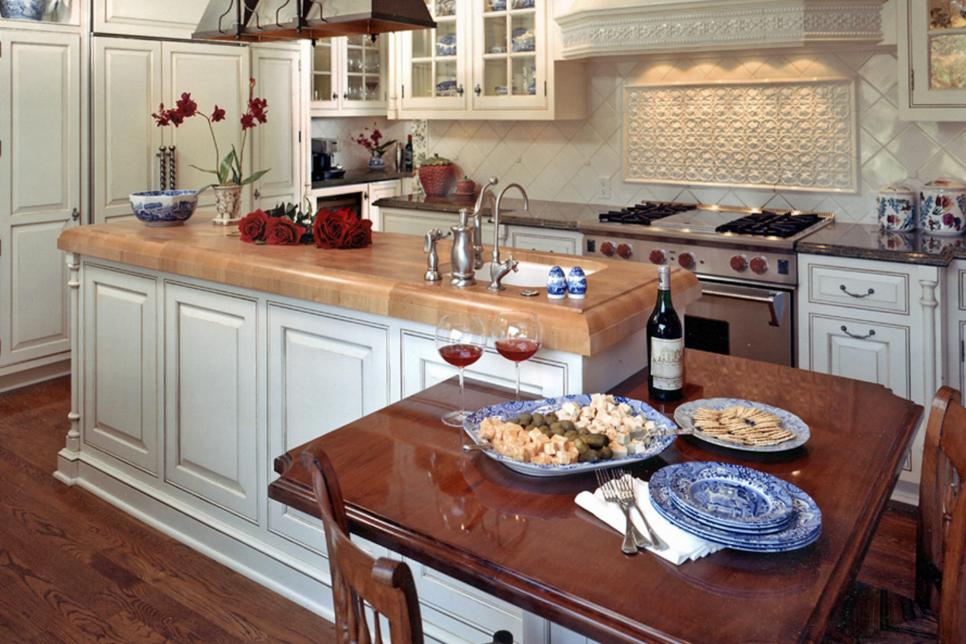
Create Multipurpose Pieces Part of Your Design If you only have room for a single prep/dining surface, it's ideal to put it at counter height, instead of table level. (It's far more comfortable to sit a couple inches high on a barstool at the same time you consume than to bend over as you dip vegetables.) With sleek lines and a polished surface, this dining counter top by Hong Kong designer Louis Lau looks nearly like palaces -- without sacrificing any of its performance.
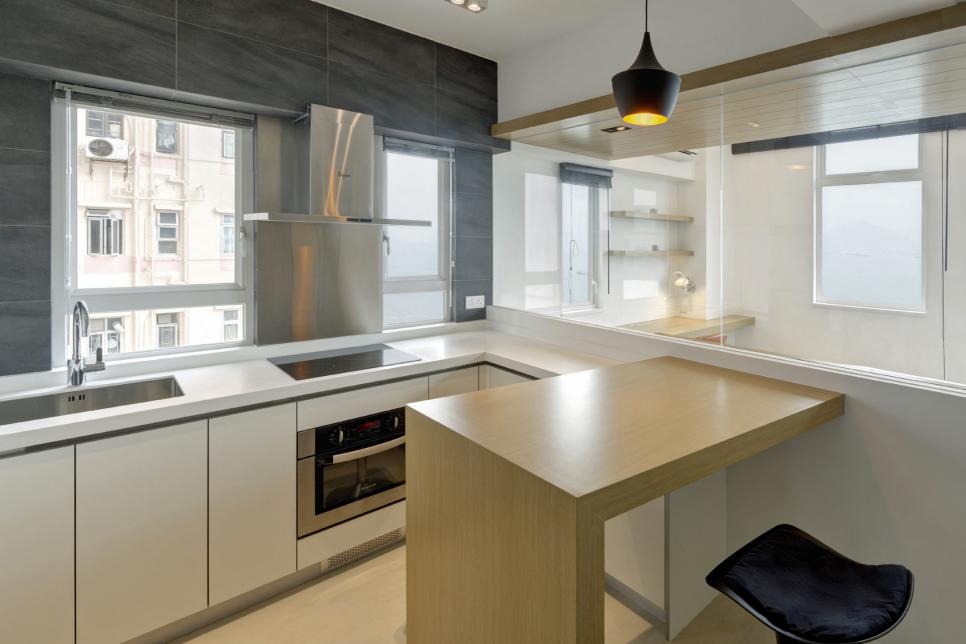
Make the Most of this View The challenge of putting the dining counter within this small apartment kitchen has been ensuring that nobody sat with their back into the living room -- or disrupted the cooking activity. "I placed both chairs on one side of this butcher-block table that both the living and kitchen areas are visible once you're seated," says interior designer Melissa Mascara. "The table's placement offers a fantastic view into the living room."

Don't Interrupt the Traffic Flow At times, however, the best place to get a counter is right against the wall. Possessing the dining table counter/computer channel in this very long, narrow kitchen by Affecting Spaces on the edge of this room keeps traffic flowing easily, and the creamy white of these chairs, counters, walls and cabinets gives the room an airy and open feel.
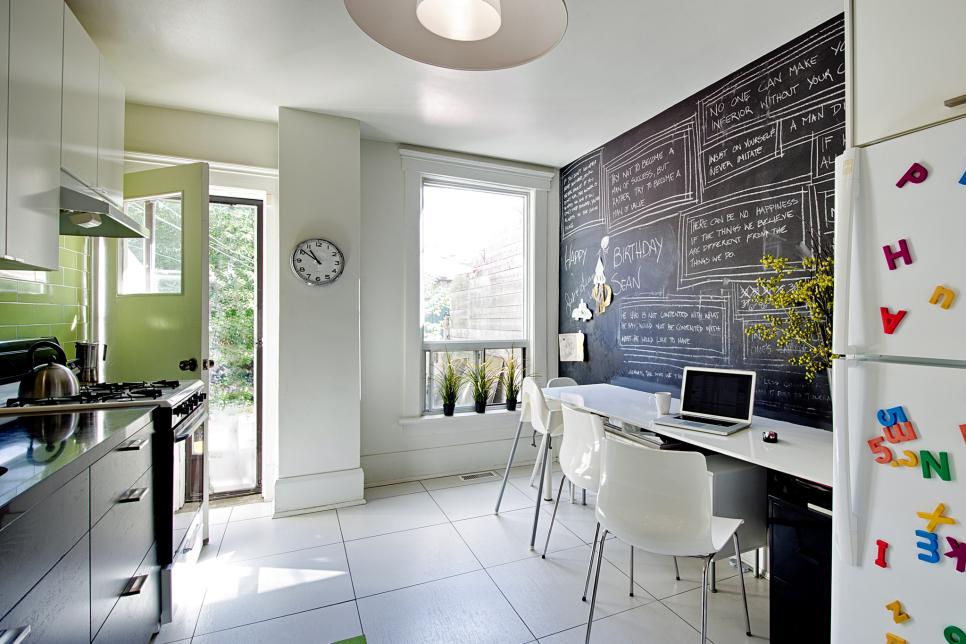
Think Outside the Rectangle When designing seating for a little space, it helps to think outside the box, in this case, past the rectangle. Inside this condo kitchen by Krieger Associates Architects, Inc.. , the prep/dining island is wider at one end to accommodate diners, and narrower at the other to improve traffic circulation.
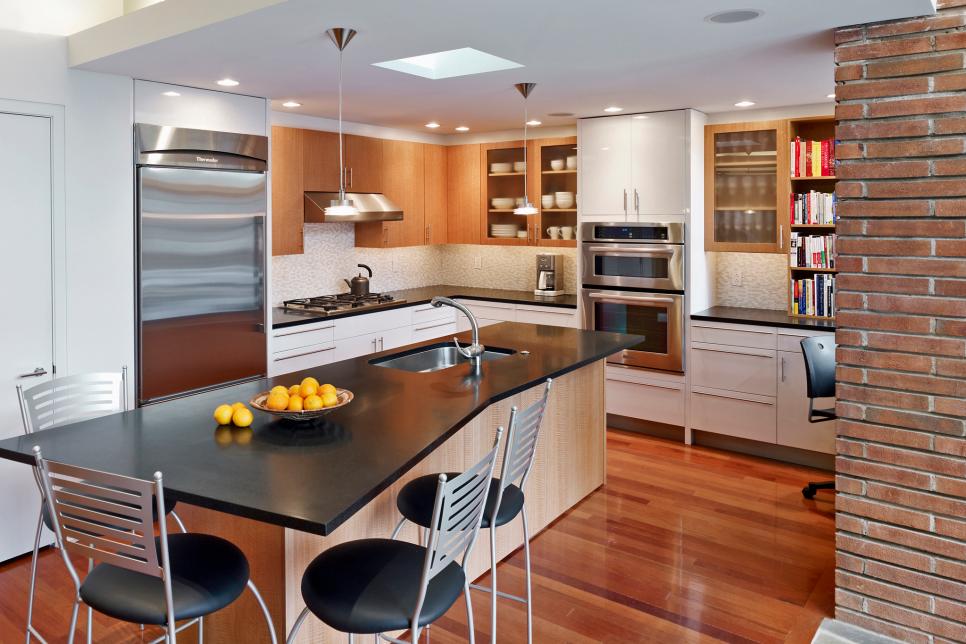
Give a Triangle a Go Eschewing the typical straight lines optimizes space in this kitchen also. Ines Hanl of The Sky is the Limit Style chose a triangular table that takes up less space than a rectangular one could -- and enriches the Atomic Age vibe of the room's fun and funky design.
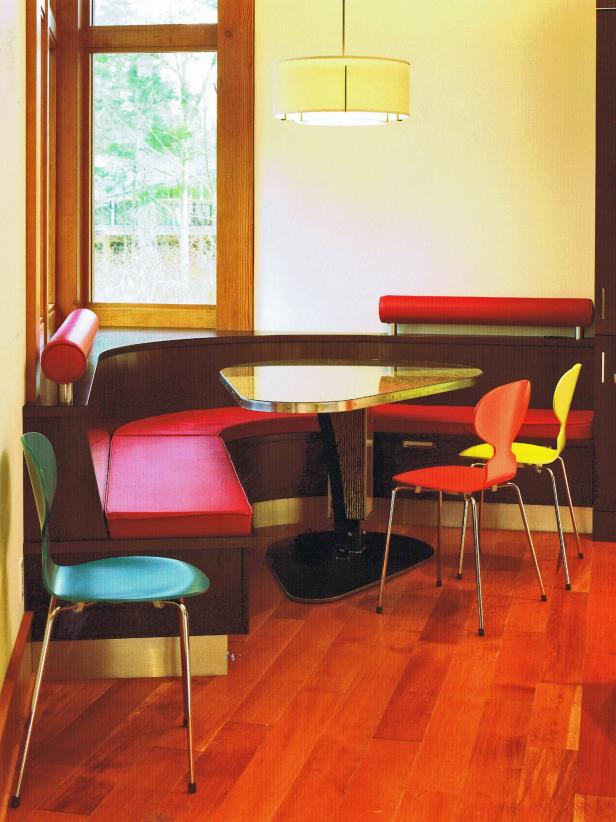
Add Just the Quantity of Dining Space You Want At first, designer Emily Mackie's clients laughed at the idea of cutting a quarter from a perfectly good round tabletop. But wrap the dining area around the corner provides the perfect spot for your retired homeowners to linger over their morning java, and this particular configuration takes up less floor area than a whole table would.
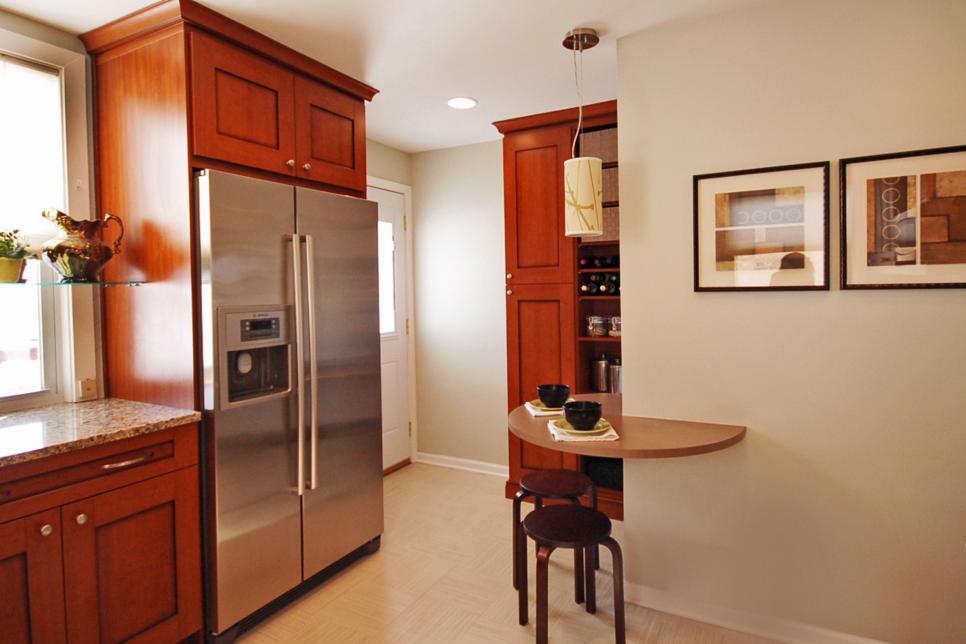
On a Pedestal If you're selecting a more standard-shaped table to get a very small dining room, interior designer Gina Fitzsimmons, ASID, guides you select one with a pedestal base so individuals can easily slide in and out of their seats. Another tip: "For maximum space efficiency, the table should overlap the chair by just 1 inch," she urges.

Insert an Easy-to-DIY Bar Top With no room for a desk in her own little kitchen, interior designer Melanie Coddington set up a walnut slab counter within an adjacent alcove. The barstools are in reality school-laboratory seats that Coddington trimmed and spray-painted orange. A mirror over the bar reveals a fairly view of trees out a bright window, keeping the tight space from feeling claustrophobic.

Add Dining Space into an Underused Room Even if you don't have space in or near your kitchen, you should not eat your dinner hunched over the coffee table or standing over the kitchen sink. With no room to consume in their 6-foot-long kitchen, husband-and-wife design team Jesse Carrier and Mara Miller of Carrier & Business turned a spare bedroom in their new york apartment into a dining area. Lesson learned: The very best kitchen layout, indeed the very best design for any space, is whatever works with your lifestyle.
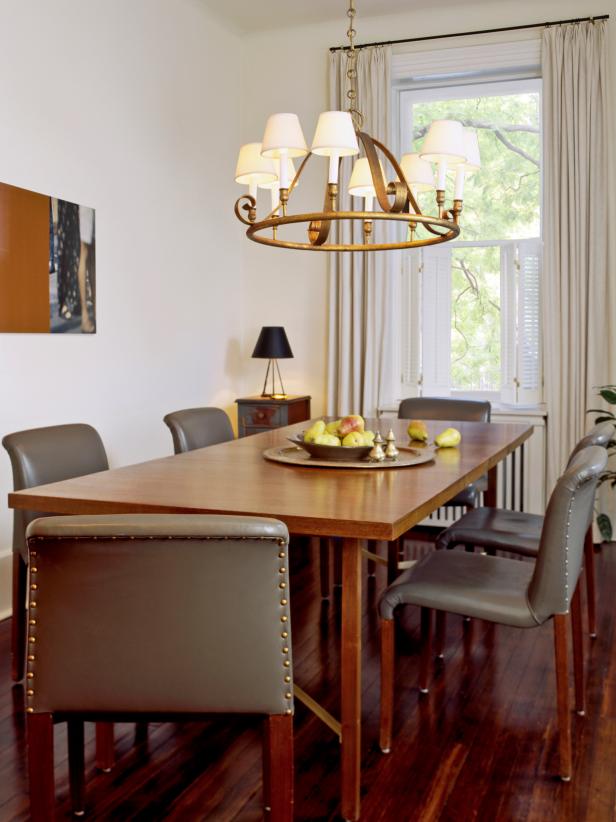
No comments:
Post a Comment